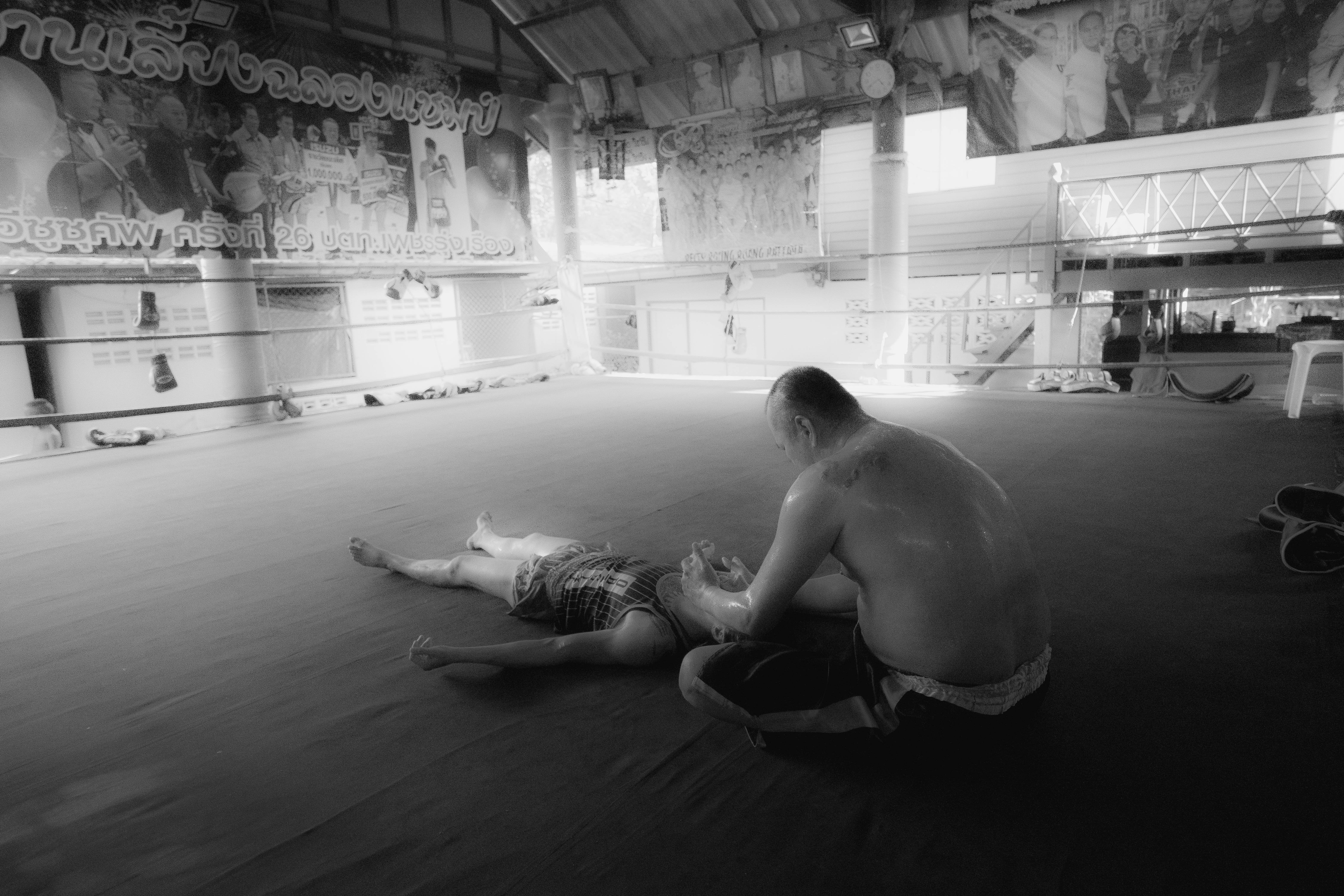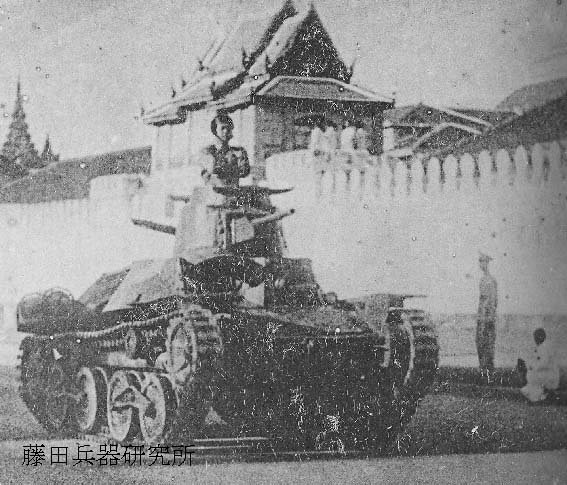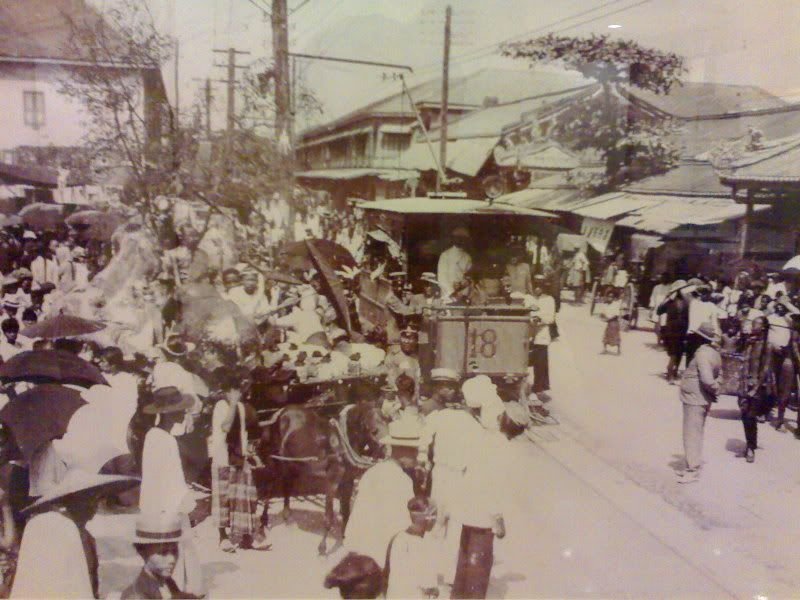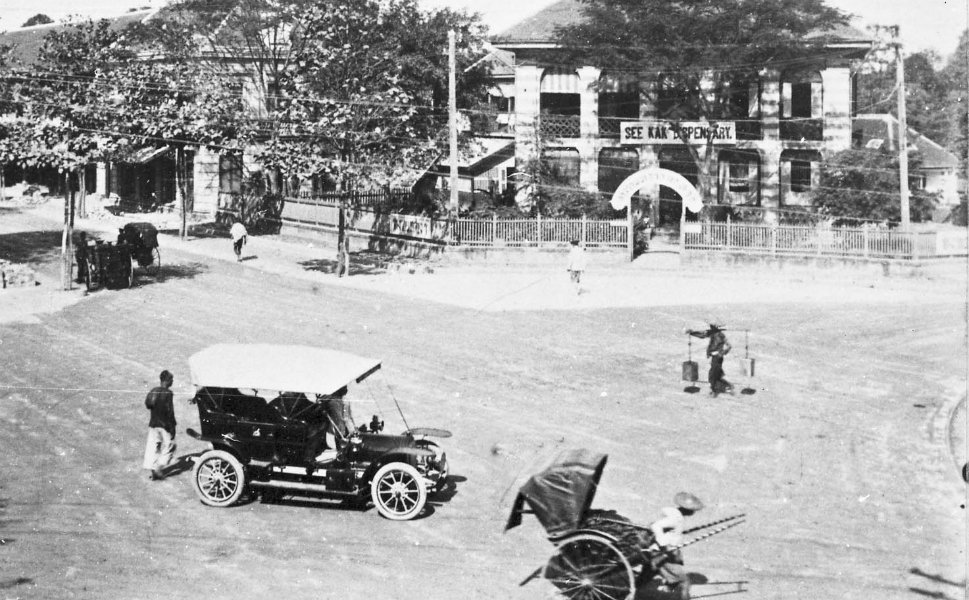-
Posts
2,264 -
Joined
-
Days Won
499
Everything posted by Kevin von Duuglas-Ittu
-
Soooo. The kickboxing talent pool is incredibly weak, you say. But the Kyokushin talent pool is amazing. I sense, well, someone who loves Kyokushin, hahaha. No matter this isn't going to reach agreement. I personally am really interested in the heritage and changes of martial arts, but honestly listening to Karate people tug of war over who was an authentic teacher, and who was the fraud is incredible boring. You never get any of this in Muay Thai, why? Because the quality of the Muay Thai is shown in actual, high level fights, fights that become incredibly famous. In actual fighters. It would be like arguing about the greatest baseball players the history of Baseball in America, but then there was an totally different version of the sport in, let's say, Norway, where it was customary to argue about who was the best TEACHER of alter-baseball, and not actual Norwegenian alter-baseball games, actual alter-baseball players. When you say: Wow, Karuhat was as good any fighter Thailand has every produced, you never get "But who was his master? Where did he get his "fight style" from?! What school is he? All these questions really point to nonsense for me. You know where Karuhat got his fighting style when you ask him? He made it up. He made it up because he was forced as a kid to spar and play with lots of other high level fighters, and he was pushed through a beautiful and difficult regime. And he made it up because he had to beat the very best fighters who ever walked, in real fights, with lots of money on the line. Please give me a fighting art that has no "masters", as the definition of its authenticity.
-
The problem was a particular, historical problem. I'm sure there is no contemporary Thai who thinks about Japanese Kickboxing as anything at all. The tensions around the 1982 World Championships were apparently VERY high. The Japanese didn't steal techniques, they copied the commercial product of fighting, put on 3 weekly televised kickboxing shows, made huge iconic stars (probably through lots of fixed fights), and then tried to bring it over to Thailand. That, apparently was the problem. As to taking the "Thai kick" or the whatever, Thais wouldn't care less. Maybe on the forums and conversation spaces you visit this is a big deal - because westerners are all about authentic technique, etc, because gyms commercially sell themselves as holding authentic technique - but Thais couldn't care less. There is so much variety of technique in Thailand it isn't even funny.
-
I think this is a huge problem when discussing this subject. One part of that problem is I have no idea what you are referring to because Sylvie developed outside of US gym culture, and all the online history. Everything she's done is far removed, and me as well. My opinions mostly formed far from any of the talk of Muay Thai's superiority. I'd run into old AX Forum stuffy from Googling, but it's a different world for me. I don't have fighters to defend, a gym to run, students to attract. I'm only really interested in preserving and acknowledging what is special about Muay Thai, because we neck deep in it, and we personally know and are closely connected to many of the legends of the sport who are now being forgotten, not only by westerners, but by Thais themselves. But, I understand that this kind of talk, the kind I'm putting forward, probably connects up with all sorts of western conversations about martial art vs martial art which honestly I'd run away from a million miles an hour. Thais don't talk or think like that, at least how I've seen. They don't even think about comparisons. If they saw another martial art they might think such a thing is silly, or that it's totally worth stealing because Thais love efficacy. I think it was only in the period when Thais felt that the Japanese were stealing their art, creating their own copycat sport, and then kind of staging its superiority, that they were like: Hey, fuck off! But all the same, other Thais were very willing to fight on Japanese TV and fall down for one of Fujiwara's amazing 99 KOs too.
-
It was in my research from more than a year ago, I don't recall! One of the newspaper/magazine accounts had it. But I don't think it had their names. One, I believe was from Singapore (by memory). I'll see if I can find the source. It's the reason why the other two fights are not often talked about. This is much in debate. Several sources I've read said the opposite, that Oyama was the master marketer. If you read up on Oyama's bio and claims for himself you run into some pretty spectacular marketing stories. I'm also not sure how you would assess his Karate, as he was Oyama's top-ish student by many accounts (though they had a falling out). If he wasn't teaching kyokushin I'd be very surprised. It serves people advocating for Karate's legacy to minimize his skill, but I imagine that really was not the case.
-
I think people get confused. They want to compare "martial arts" or "fighting styles" in the complete abstract, as if they are software programs that exist out there in some other reality, and they argue that one is better than another. Muay Thai is proven, in actual fights, as superior probably MOSTLY because Thai fighters have grown up fighting an incredibly inordinate number of full contact fights, from youth. No other art or fighting style on the planet is like this, to this degree. The average run of the mill Thai fighters is incredibly comfortable with the fight space and violence, if only because of early and very frequent exposure. The Thai Muay Thai fighters walked through Japanese Karate fighters not because abstractly "Muay Thai" is better than "Karate", per se. It's because Thai Muay Thai fighters have been fighting since they were kids, in highly contested, full contact fights, and a lot of them. It's like the rich kid walking up and fighting the poor kid in the mean streets. Most things being equal, it's not the fighting style of each. It's that one kid has been fighting his way to the top of a pile his whole life, and the other guy has been taking lots of a classes and "sparring hard". Early Karate fighters in these Japanese vs Thai faceoffs really were kind of social elites. Karate was passed down to relatively affluent Japanese students (it moved through the University system). While that was happening poor kids in every village of Thailand were fighting in endless full contact festival fights. Put the two to together, and you get a mismatch. People look at this question in completely the wrong way, as if "Muay Thai" in the abstract is somehow proven better than "Karate" in the abstract. Ok, if you are saying "I'm going to study a martial art, which one is best!", maybe there is some interest in knowing what is "best", but really it's about what protocol and experiences are you going to undergo. You can learn "Muay Thai" in a mall gym and suck. You can learn Karate under much more fight heavy situations, and be pretty awesome. But, the protocol and process that produces the average Muay Thai fighter, since youth, is pretty much unparalleled in the world. There is a secondary case to be made, and I make this case, that Muay Thai has a superiority in the sense that the overall art of its techniques actually developed through real fighting, with lots of weapons, over decades and decades. That is, you didn't have "master" coaches inventing principals or moves out of their own creative impulses (which may or may not be effective), as much as you had repeated experiments and feedback pushed through 100,000s of thousands of real fights. The whole sport/art form takes on, I think, a certain efficacy and vocabulary. This is just a theory though. You can't prove it by simply putting a Thai Muay Thai fighter vs a Japanese Karate fighter because I think the real difference in efficacy comes from the personal experiences of each fighter, and their comfort in the space, not from some abstract "style". But it makes good sense to me. I think the same thing informs the efficacy of western boxing, which today rests on the developments of 10,000s and 10,000s of real fights, many of them in the impoverished classes, for now at least a hundred years. You can see the weight of the techniques that come out of that heritage. Thai fighters, as in, real elite Thai fighters in their prime don't even fight in these kinds of rulesets (rulesets designed to remove many of the Thai's weapons, to keep them fighting in limited vocabularies so the westerners and others can keep up). Buakaw wasn't even an elite fighter when he moved over to K1. He was a good young fighter, but that's about it. They were like "hey kid, go over there and do this thing in Japan". He walked through K1. You talk to Thais and most feel that Buakaw would be blown out by the best Thai fighters in Thailand in a Muay Thai fight, and they've felt that way for many years. They are proud of him as a Thai icon, but people seriously in the game don't think he's close to being a top Muay Thai fighter, I've heard many laugh about it. There are almost no examples of top Thais crossing over to fight others. Today you have someone like Yodwicha who is ripping through the Top King promotion, hilariously doing so as a puncher. Why is it funny that he's doing it as a heavy handed puncher? Because when he was fighting at the highest level in Muay Thai (won co-Fighter of the Year), he was endlessly criticized for having "no weapons" and being only a clinch fighter. He moved onto kickboxing and had to give up his one big weapon, the clinch, and just started knocking people out left and right, something you never saw in Thailand:
-
That was so cool. I have to tell you, I've lived in Thailand for now maybe 7 years? I've read and heard a lot of western experiences and had my own as well. For some reason your entire description really moved me. Really, almost to the point of tears. (Ok, maybe a tear.) There is such sincerity that we all feel, but we just also feel like we are only going to do it wrong. But really all it takes is moving forward, taking the adventure a little, and opening yourself to chance. That you just went and did it, and how your driver helped you, and that you realized that these are just very human things, that a blessing in Thailand is not some fancy - better not blow it! - event, but it's conditioned by heart. Fuck, this is good stuff. You have a very blessed mongkol! This is the very best of Thailand. Pretty cool. (Would love to see a photo of your mongkol if you can post it.)
-
You're not a fan of AirBnB? It is so huge for us. We can find places to stay in the middle of nowhere in Thailand? Fighting in any city we can find a short term room. It's incredible. (I have to thank @Kaitlin Rose Young for totally converting me on this, it's been a life changer.) I guess though it would be a weak option if you are looking for super low budget, which is probably where you run into those 6 month lease barriers.
-
Not really worth mentioning - I mean you can mention it, but you would also have to mention that they "Muay Thai fighters" that they beat were not Thais, hahahaha. And, you can guess just how good those non-Thais were. Non-Thai "Muay Thai" fighters in 1963? It's amazing they could find them. It pretty much let's you know the purpose of the match. Fly all the way to Thailand, fight and win again non-Thais. Oi. The one Thai who fought a Japanese fighter obliterated him. This dominance was repeated in the World Championships of combat Martial Arts in Bangkok, I believe 1982. When all the Thais made quick work, sometimes VERY quick work of the Japanese fighters (and everyone else), almost 2 decades of training and fighting since these initial embarrassing losses. The only loss of a Thai to a Japanese fighter in those bouts (Headline: "Japanese kickboxing beats Muay Thai!") was due to disqualification because the Thai was judged to be clowning the Japanese fighter - not to mention that there were apparently accusations that the Japanese coalition was attempting to fix fights. Yes I've run into his description a few times. Some people like to pass this off as if some every day unprepared "coach" was just pulled in unexpectedly. Yes, he may have fought without a lot of prep, but he was not just some coach. He probably would be the closest thing one could find as a Kyokushin Master. I've seen lineages which claim he was even a Kyokushin co-creator (10 years before, 1953) (these schools like to fight over who is the progenitor). In any case, he was about as powerful a representative of Kyokushin as one could possibly come up with, or at least an elite one. He wasn't just one of many random coaches on a team. You have a Karate Master, a man who helped create and disseminate Kyokushin, going up against a Thai the history books otherwise would have forgotten. I'm pretty sure the Thai wasn't training months for this fight either, to be honest. Sounds like a fight a Thai would take on a few days notice. Suffice to say, Kurosaki understood himself to be thoroughly and intensely beaten. His response wasn't "Gee, if I only had a fight camp!" and "I must train harder!". His response was to completely reinvent his art and create "Kickboxing" which was eventually passed to the Dutch. I suspect that he ended up thinking that it was a blessing that he fought instead of just a student of his, as he might have blamed the loss on just the skill of the student. Instead he experienced first hand the difference (and deficit) of his Kyokushin, and focused his life on making very big, in fact profound changes.
-
It's crazy that people aren't drawn there, and instead all flock to something like Yokkao. I mean, Yokkao is great for a certain kind of traveler. Lots love it, but many are looking for a fighters gym. Very interesting. I had no idea, to be honest. Would love to hear someone's personal experience there. I just assumed that because I heard nothing, nobody was going and there was a reason for that. I thought it was something like Pinsinchai gym.
-
This is a very interesting fight to me. Not so much that it's a pinnacle fight, but rather that it shows that a man vs woman fight between decently skilled and experienced fighters is really not a big deal at all. All the fantasies about "bone density" and such melt away. He had a couple of pounds on her, pushed a big early lead by cut, and managed the fight to the end. But, if she had her cardio going I think the fight might have gotten pretty close. There is definitely no "these two should not fight" feeling here. It's a scrap in the usual Thai style between moderately in shape, experienced fighters. In these conditions women should not fight men is not much different than the "women should fight 2 minute rounds, not 3 minute rounds". I think if it was something that women aimed for and trained for it would probably be much better for female Muay Thai, to be honest.
-
Maybe think about Santiennoi's Gym outside of Bangkok? He's handled some higher profile westerners (Samon Dekkers for instance), is a legend of the Golden Age. It's also a pretty traditional gym, probably a little unlike your past two experiences, which might be cool. In general though, checking out accommodation through AirBnB is always good. You can see the general cost of apartments and rooms around wherever you choose, and get a foothold that way.
-
A Japanese tank passing in front of the Royal Palace in Bangkok in December of 1941, beginning the Japanese occupation of Thailand as a staging area for the war. Rajadamnern Stadium was being built slowly through this period, until being halted due to low supplies in August of 1945. Building would resume and the first Rajadamnern fight would be held December 23, 1945, four years after this photo. The resented-by-many occupation of Thailand would likely shape the future relationship with Japan in the decades that followed. In the decade after the war Thailand would embrace western boxing, with three magazines devoted to boxing started in a very short time: Kila banthueng (1948), Muay raisapda (1949) and Kila muay (1950).
-
This is the electric tram that people would likely take to see the fights at the City Pillar in Bangkok, where the biggest fights would be put on in temporary circles (The city pillar was the holy center of a city, an actual sacred pillar). This is the City Pillar "Thanon Tok" line tram, 1887. We like to romantically think of Muay Boran in very antiquated terms, but people were literally taking cable cars to watch those fights for decades. This tram line was in operation for 25 years before the 3 schools of Muay Boran were even formally designated. And 41 years after this photo was taken the death of Chia Khaek Khamen when fighting Phae Liangprasoet at the city pillar (1928) would mark the end of legal, rope-bound fights in the Bangkok, by the decree of the King (Rama VII).
-
Yes, definitely. And in fights. It is unclear if judges will simply ignore the point on throws and trips that technically break the rules (the rules on this are not something Thai fighters ever see printed out), or, if the gray area, or out-right flagrant fouls will even be awarded some sort of credit, if done with panache, if the ref in the ring doesn't warn. I've seen a lot of questionable back of the calf trips that can be done with flourish, and in fact one female gym in Chiang Mai regularly does them in fights. I think to pull these off you have to really dominate with them, and have style, at least outside the National Stadia. I don't watch enough National Stadia fights to see if fighters there get away with them. A notable gray area, as well, is not tripping with the inside of the foot (must be top of the foot). In training everyone uses the inside of the foot because it's not painful to you or your partner. I imagine that there are more than a few inside of the foot trips in fights, simply out of habit. One element of the flair that Thais have learned to use is that the flair really takes these kind of moves, stylistically, away from the aesthetics of Judo, so it could be that that sense of style helps blur the line.
-
This post cannot be displayed because it is in a password protected forum. Enter Password
Footer title
This content can be configured within your theme settings in your ACP. You can add any HTML including images, paragraphs and lists.
Footer title
This content can be configured within your theme settings in your ACP. You can add any HTML including images, paragraphs and lists.
Footer title
This content can be configured within your theme settings in your ACP. You can add any HTML including images, paragraphs and lists.




